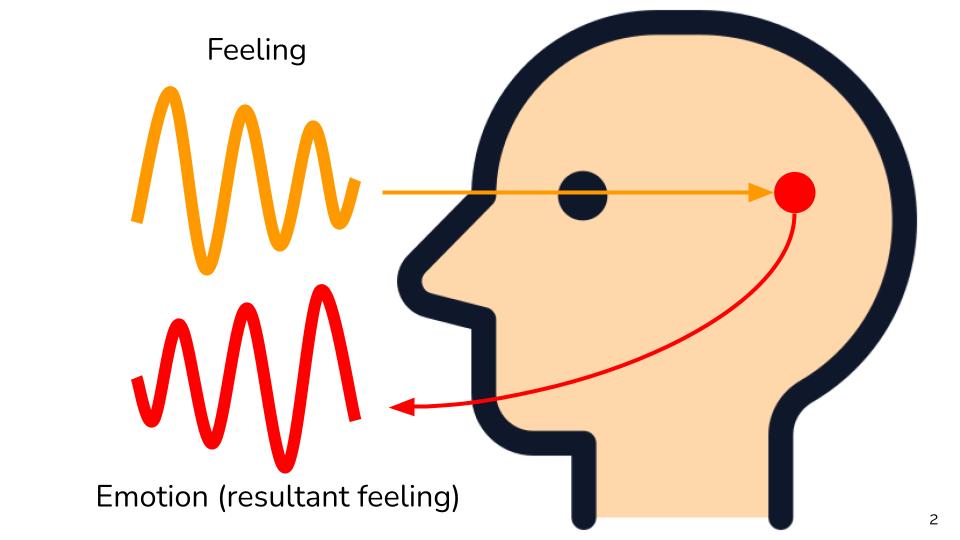The Nature of Feelings and Emotions
Table of Contents
Chapter 1f explained that:
- the universe has a wave-nature
- waves manifest as feelings
- nodes of waves manifest as ideas
Feelings are Superior to Intellect
Feelings manifest as:
- forces when interacting with crude nodes
- emotions when interacting with subtle nodes
We cannot quantify forces at first sight unlike objects. For example, we see 3 apples and can declare the number 3. But we cannot easily say their weight by just our hands.

Material Superphysics explains that:
- the sight of the apples is from their aetherspace which is static
- the feeling of the weight of the apples is from the space particles which are constantly flowing
Thus, feelings and forces are hard to quantify and to objectively standardize since they are dynamics waves.
Ideas, on the other hand, are easy to define and quantify and standardize into belief systems
This makes the control of the intellect easier to develop, than the control of the feelings.
- The intellect or brain is our detector and manager for our ideas
- The heart is our detector and manager for our feelings
The perception of ideas through experience are done by the intellect. However, the movement from idea to experience are powered by desire. Without desire, idea and experience would never meet and loops will never close.
For example, you are on your bed about to go to sleep when suddenly get a desire to know what is the capital of North Korea. But the desire to sleep is stronger than your desire to know. And so instead of grabbing your phone to Google it, you choose to sleep. As a result, your intellect was not able to find out what is the capital of North Korea.

Desire is a fundamental kind of feeling which we sense through our hearts. We can say that:
- the intellect is our built-in sensor for ideas
- the heart is our built-in sensor for feelings
Ideas can be represented by accurately physical objects. For example, the idea of the North Korean army can be represented by its marching soliders.
However, feelings cannot be universally represented by objects. For example, the feeling of freedom has been represented by:
- a flying bird
- broken chains
- a person with open arms
To unify feelings, we need to:
- Objectify them into emotions
- Probe the gravitational signature of the people or animals for their essential emotions
- Harmonize conflicting emotions through relationality via Socratic Dialectics
Inward Feelings Versus Outward Emotions
The word “feeling” comes from the Old English “felan” which means “to touch or have a sensory experience of something”.
- Since feelings are aethereal waves, then feelings are waves going inwards to the mind.
The Latin word “emovere” which is a combination of “e-” (variant of ex- ) meaning “out” and “movere”, meaning “move”.
- This implies an outward movement or expression.
We can think of emotions as feelings that have been processed by the perceiver according to his gravitational signature or personality configuration.
- Emotions are therefore subjectivized feelings just as knowledge is subjectified thoughts.

Emotions are more commonly seen in the items that we personalize, such as our clothes, computer desktop, office workspace, bedroom, personal vehicles, etc.
These customizations express our gravitational signature to the outside world and validates our personality structure.
Physical Emotions as Media or Forces
Feelings pervade existence and are also ‘felt’ by non-living things, such as rocks and ice.
A high amount of heat makes:
- a rock turn redder
- ice might melt and evaporate
We can say that the red color and the evaporation are the expressed emotions of the rock and ice, respectively. This is consistent with the assertion in Chapter 8a that the physical universe is alive.

We classify the forces discovered by Physics into our 5 Elements + 3 Gunas model.
| Guna + Element | Force or Media |
|---|---|
| High Spatial | Time |
| Mid Spatial | Aetherspace |
| Low Spatial | Space |
| High Radiant | Light |
| Mid Radiant | Heat |
| Low Radiant | Virtual Photons |
| High Convertible | W Z Bosons |
| Mid Convertible | Intramolecular Forces |
| Low Convertible | Intermolecular Forces |
| High Material | Gas (Air Pressure) |
| Mid Material | Liquid (Water Pressure) |
| Low Material | Solid (Contact Force) |
Feelings Hold the Key
A lot of the problems in Physics exist because the nature of forces are not known. For example, modern people still cannot harness anti-gravity because of the overemphasis on brain and intellect. This is opposite of the ancient people who could levitate themselves as proven by Buddhist monks by focusing on their hearts and having compassion for all.
More obviously, wars and economic crises are more severe from the 20th century because of the supremacy of the intellect and the disappearance of fellow-feeling and kindness.
Superphysics puts feelings back up, without appearing corny, uncool, old-fashioned or naive, by demonstrating the practical uses or benefits of having such feelings from the Positive Force.
For example, Economic Superphysics, as Supereconomics, uses a moneyless system where people get the gadgets of other people (who don’t need them) through exchange.